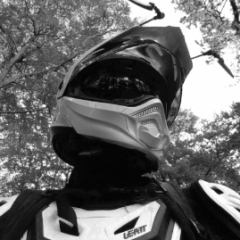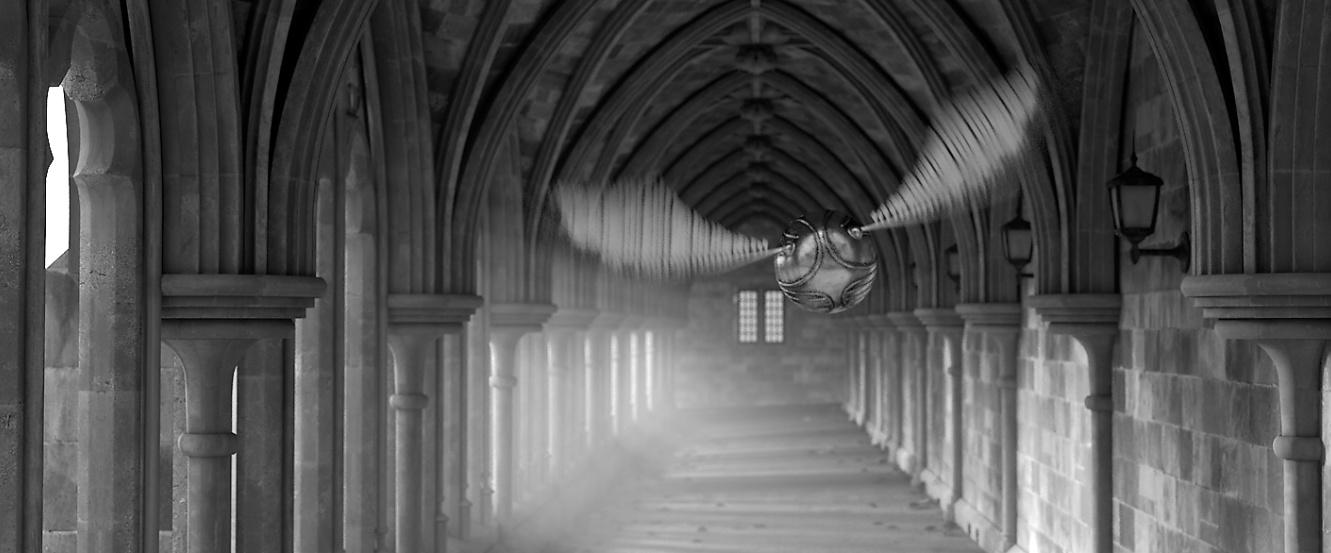-
Posts
17,889 -
Joined
-
Days Won
717
Content Type
Profiles
Blogs
Forums
Gallery
Pipeline Tools
3D Wiki
Plugin List
Store
Downloads
Everything posted by Cerbera
-
Welcome to the Core 🙂 Please complete your profile before asking questions so we have the information we need to be able to answer ! Software version particularly important ! We need more contextual information to be able to properly advise. If this is a mesh that will be used with Subdivision Surfaces for example, then Ngons and triangles do matter and should be avoided, whereas if this is a regular hard surface model then they don't so much, though they can be avoided anyway using better modelling techniques, as demo'd below... bevels on rounds.mp4 So, using the bevel tool as you were doing, to try and bevel 1 or a small group of edges that are already part of neighbouring geo is a bad idea for several reasons. 1, it creates ngons or triangles, neither of which are desirable in most modelling where curved surfaces or Subdivision Surfaces are involved, and 2, the tool is unable to specify what should happen in the transition to the unselected areas - and therefore we get the clues that this is not the right tool for that job... You say it worked on the straight section you posted, but actually it didn't work there either - that is a similarly unhelpful / low quality result unlike the nice all quads version we get doing it the other way... CBR
-
There's nothing quite like a good bit of furniture, simply presented, and you definitely ticked all the boxes there. Lovely stuff. CBR
-
OK, we've got your reduced scene, which means more people can load it, and then tell you exactly the same thing as we all did further up the page ! Dynamics is not suitable for that task in a scene of the proportions and scope you first posted. You should use something that is, like the Cloner (alone, no dynamics), or Forester's scatter functions, whatever they are, which will presumably be optimised for populating a vast landscape with thousands of mid to hi-poly clones. Or at least tell us what dynamics are doing for you that these other methods can't... However, in your newer test scene, dynamics does actually prevent the objects falling through the terrain - look - here they are not falling through ! Only thing I had to change to make that so was to go back to regular instances in the cloner, so dynamics can work properly. Of course that would be a terrible idea in your full scene, in all its multi-million poly vastness, so it merely underlines why this method isn't going to work here. CBR
-
Well it's such a simple thing I didn't think we'd need one ! But as you wish... Balls2 CBR Fix.c4d CBR
-
Copy the dynamics tag on the Voronoi Fracture object to the sphere it contains as well. Then keyframe the dynamics (tab) enabled property of each so that the animation starts using the tag on the sphere (VF dyn tag disabled), but once it leaves the end of the ramp in a single frame you can disable that tag, enable the VF dynamics one, and then it should break when it hits the ground... I have that working in R25, but not sure that loads in your version... CBR
-
Oh, thank goodness... been looking for that button for years ! CBR
-
Yeah, if those are the numbers, forget dynamics; that is so far out of the scope of what they are capable of as to be laughable... Abandon ship, abandon ship ! CBR
-
Again, interesting ! This scene does appear to do what I am expecting you want, but now takes 21 seconds per frame to do it (standard render) whereas the previous version took 2 seconds per frame ! What is the difference between the 2 files please ? CBR
-
Interesting. This does render in my version of R25, but not sure it's the result you are looking for... tick.mp4 I admire the thinking, and indeed my own was going a similar way initially. But whilst we can alter the length / growth of hair over time via vertex maps etc I don't think we can ever make it disappear completely can we, which might be the Achilles heel in this setup... CBR
-
Please don't remove posts once a solution is found - the idea of forums is that they stay around to help others who may be experiencing similar issues ! CBR
-
Wow - if that was the case I didn't know about it ! 🙂 I suspect what you are talking about may not apply any more in 24 onwards since there is no longer any distinction between component modes and UV component modes - perhaps that is the difference, or reason for it.... however I can confirm the UV Magnet tool in R25 definitely doesn't work in the regular viewport. CBR
-
Welcome to the Core 🙂 Please make sure to complete your profile before asking questions, so we have all the info we need to be able to help, at least which version you are using... Oh dear. It is not a good idea to apply live hair to a live generated object that is constantly changing shape and size, especially one that starts off not there at all; indeed I am surprised you can make that work in any way at all ! Does the hair object not just disappear at frame 0, when there is no geo to hang it on ?! 'Is there any way around that?' is the question, and I do worry the answer may be 'no'. I'll have a think about that. But if it is working in any way at all for you (and it isn't for me!) the best chance you have with the current setup will be to set the hair distribution mode to Polygon Area, so that the hair is not tied to the ever-changing position of actual component geometry. CBR
-
I am confused by the question, because I don't think we have ever been able to drag UVs anywhere except on the UV canvas, or via the texture mode gizmo when we are using standard projections. Perhaps you are referring to the Interactive Mapping command in BP UV edit ? CBR
-
Considerably bigger update than Max got hey ?! Surprised you're learning that, @Igor... Houdini I totally understand, and Blender I suppose because it is free, but just wondered why you wouldn't stick with Cinema, software you already know really well, for all the things Houdini is not needed for... CBR
-
By far the most difficult thing about character work is the actual animation itself, so if you don't have to do that, then that is a lot of time saved. You might be able to get away with Character Object for the rig and pose morph for facial expressions, both of which are pretty quick and easy to set up... CBR
-

How can I anchor Capsule and Node icons on my custom Layout ?
Cerbera replied to HappyPolygon's topic in Nodes
Not a plug-in. Search Asset browser for 'FUI'. If it is publicly available now (and Chris seemed to think it was on today's Rocket Lasso) it should appear in the Asset browser for anyone subscribing. CBR -

How can I anchor Capsule and Node icons on my custom Layout ?
Cerbera replied to HappyPolygon's topic in Nodes
You can add capsules to palettes (I've done it with Chris's FUI elements), but as far as I can see, not that specific New Node Command I think, which, judging from its greyed-out context property in Command Manager can't be used with any other context than node layout. I imagine that is intentional. CBR -
I would estimate about 8 hours to model and UV a character like that, with suitable edge flows for animation. Longest time will be getting hair and clothes right. CBR
-
I have moved it to correct section for you... CBR
-
Welcome to the Core 🙂 Good to have you onboard ! Lots of great stuff in Cinema for the creation of abstract art. May your learning and sharing be equally excellent ! CBR
-
You're welcome... They do ! Indeed I know the answer to this because it has been asked before here 😉 CBR
-
Is it because you have auto-normalize turned on in the weight brush ? CBR

